If you are an antique afficionado, chances are you probably own at least one item that would fit under the “chinoiserie” category. ( Blue willow plates anyone?) But what exactly is chinoiserie and how did it become a staple of the “ English country house” aesthetic?
History
While the Victorian era might come to mind when looking at those lovely blue and white design, the chinoiserie’s "golden age" is in fact much earlier.
Popular in the 17th and 18th centuries during the Rococo period, European artists, designers, and architects began to imitate or interpret what they saw as exotic elements of Chinese and East Asian art. Chinoiserie (from the French chinois, meaning "Chinese") emerged in Europe following the increasing trade with China and other parts of Asia via the Silk Road and maritime routes.
As Chinese porcelain, lacquerware, and textiles became coveted luxury items, European artisans began to mimic these designs—though often with little understanding of their meaning or symbolism. Due to its wide demand, multiple artist started creating their own “ representation” of Chinese culture. The result was often a rather romanticized and imaginative version created for Western tastes.
Found in architecture, interior, textiles, ceramics, and even garden design. Artists like Watteau and designers like Thomas Chippendale helped popularized the style by incorporating chinoiserie into furniture and wallpaper.
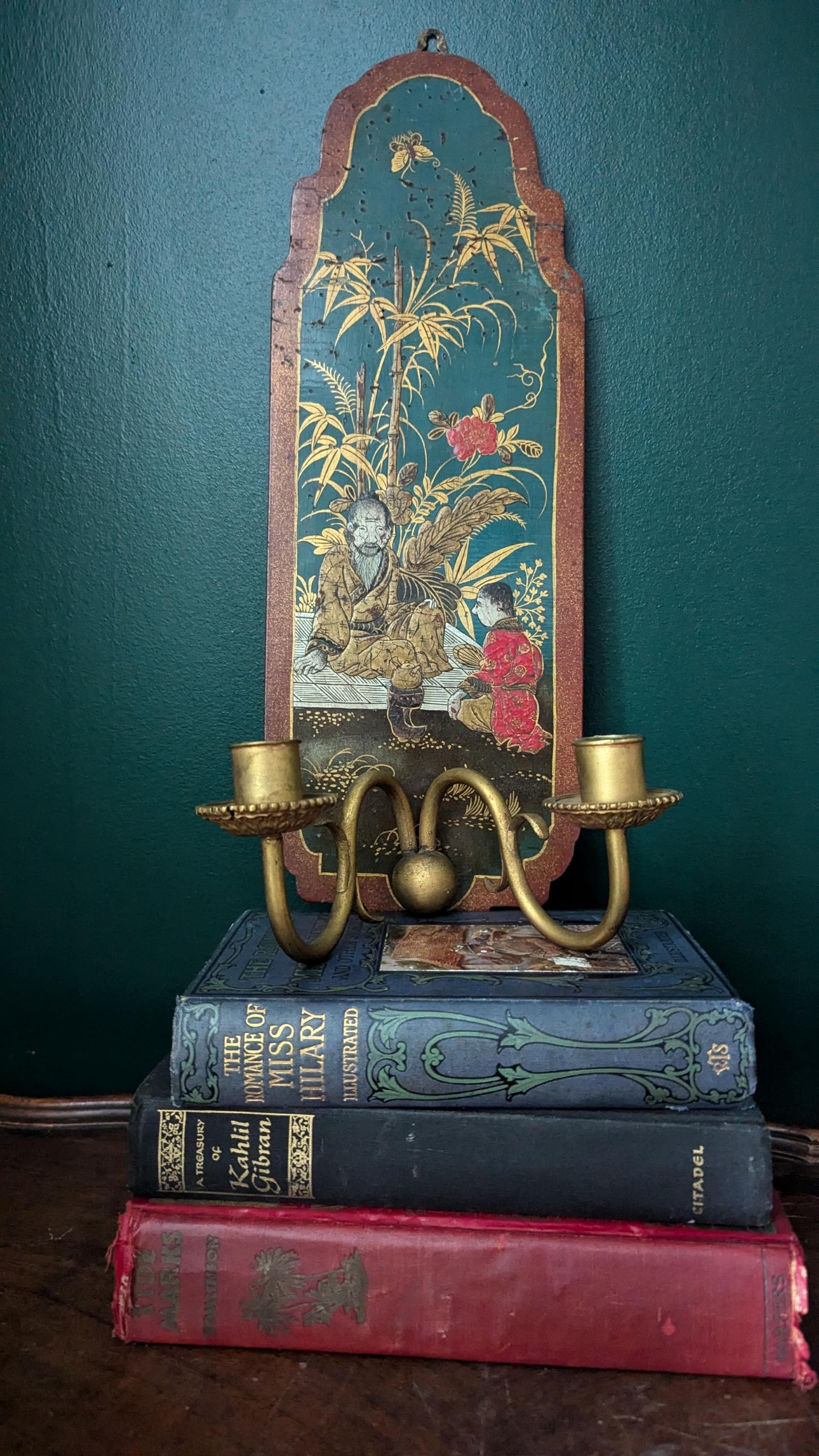
(Hand painted chinoiserie candle holder * SOLD*)
Key Features of Early Chinoiserie:
- Decorative motifs like pagodas, dragons, phoenixes, Chinese figures, and stylized landscapes.
- Materials and techniques such as lacquerwork, porcelain, and silk.
Furniture and interiors designed with intricate ornamentation and curved lines.
Playful, whimsical tone, often mixing fantasy with Asian-inspired elements rather than aiming for authenticity. Interiors were fantastical, combining Rococo curves with faux-Asian landscapes and figures.
Victorian Era (1837–1901):
Chinoiserie experienced a revival during the Victorian era, part of a broader interest in exoticism and eclecticism and the popular “ Grand Tour”. Tea drinking culture also played a role—Chinese teapots, tea caddies, and cabinets became symbols of refinement. Having an interest in foreign culture even when heavily romanticized, was seen as a sign of cultural knowledge and very “de bon goût”.
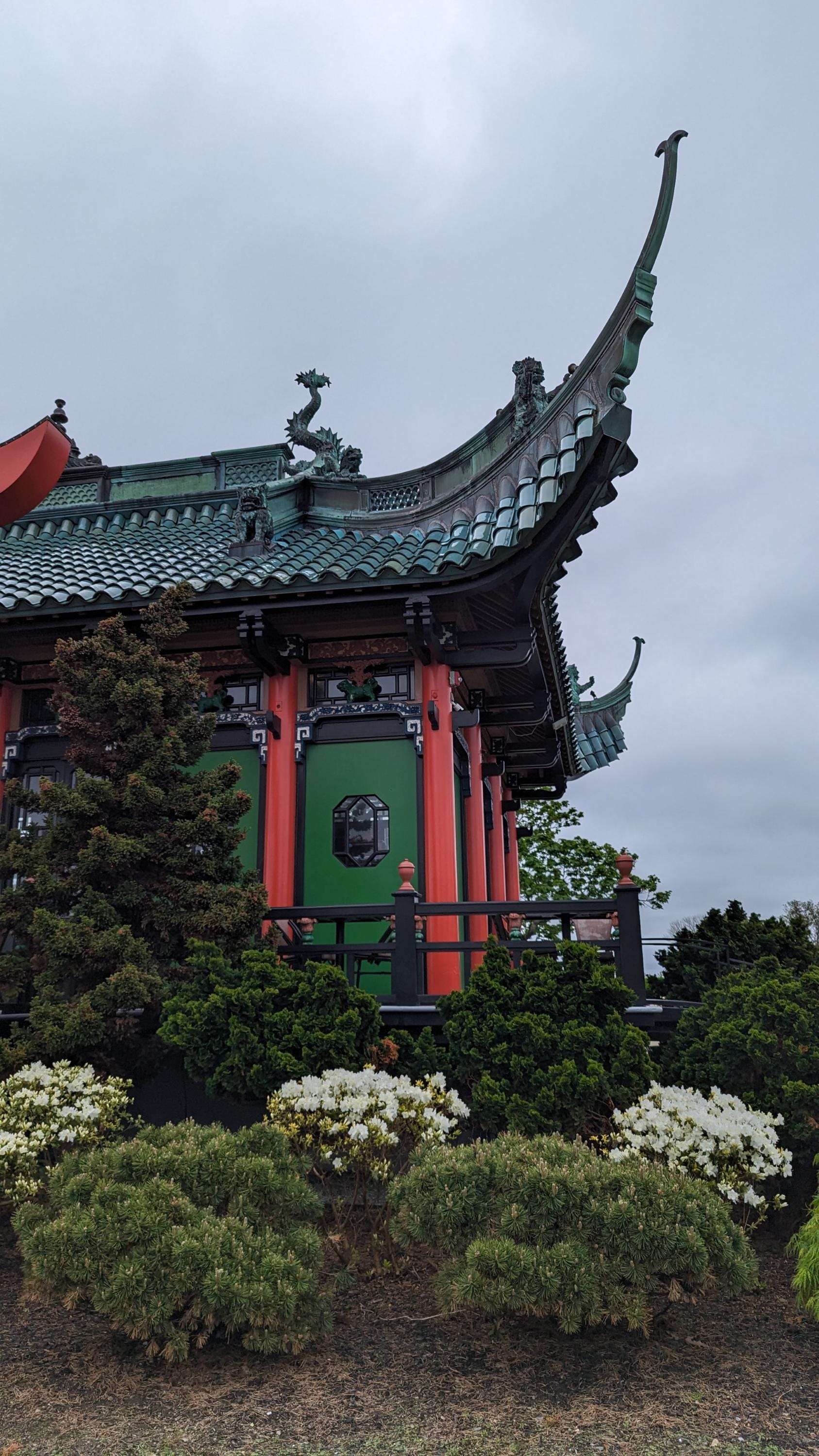
( chinese tea house at Marble House built in 1914 by Alva Vanderbilt Newport RI. This tea house was built to host suffragette meetings. )
Unlike its rococo predecessors, Victorians chinoiserie blended Asian motifs with Gothic and Neoclassical styles. Japonisme (influence from Japanese art) and Indian culture also sometimes overlapped.

( Mrs. Howard Cushing (Ethel Cochrane) Painted by her husband in an " Asian inspired" setting. Howard Gardiner was greatly inspired by Asian culture and often used his wife as a model. 1904 ( Many of Cushing paiting are in display at the Newport Art Museum)
Victorian interiors were layered and maximalist. Chinoiserie fit perfectly into this mindset—offering both aesthetic appeal and a sense of imperial sophistication. This wasn’t about historical accuracy; it was about creating fantasy and displaying worldliness.
Victorian Chinoiserie Characteristics:
- More heavily ornamented than earlier forms.
- Use of ebonized wood with mother-of-pearl inlay.
- Porcelain pieces (e.g., vases, figurines) were highly sought after. Blue and white porcelain (ginger jars, vases)
- Chinese export ceramics
- Ivory carvings
- Lacquered boxes
- Silk screens
- Wallpaper and fabric often featured intricate scenes with pavilions, birds, and Chinese landscapes.
- Materials (e.g., giltwood, tortoiseshell, or porcelain, cloisonné)
How to incorporate in today's decor:
While victorian maximalism might not be for everyone, incorporating chinoiserie into modern décor can add elegance, whimsy, and a touch of exoticism without making a space feel dated or overdone. The key is balance—blending classic chinoiserie elements with clean lines, neutral palettes, or contemporary accents.

(Small chinese enamel cloisonné trinket dish or ashtray) *AVAILABLE*
1. Statement Wallpaper or Wall Panels using chinoiserie design (like hand-painted silk panels or murals) on a single feature wall—for example, behind a bed or in a dining room. Frame sections of wallpaper as large art pieces for a subtle, modern nod.Brands like de Gournay, Fromental, or more affordable options like Anthropologie offer updated takes.
2. Porcelain and Ceramics Display blue and white Chinese porcelain in groupings on open shelves, console tables, or mantels.Mix antique and new ginger jars or vases with modern furnishings.Use chinoiserie-patterned tableware for a sophisticated dining setup.
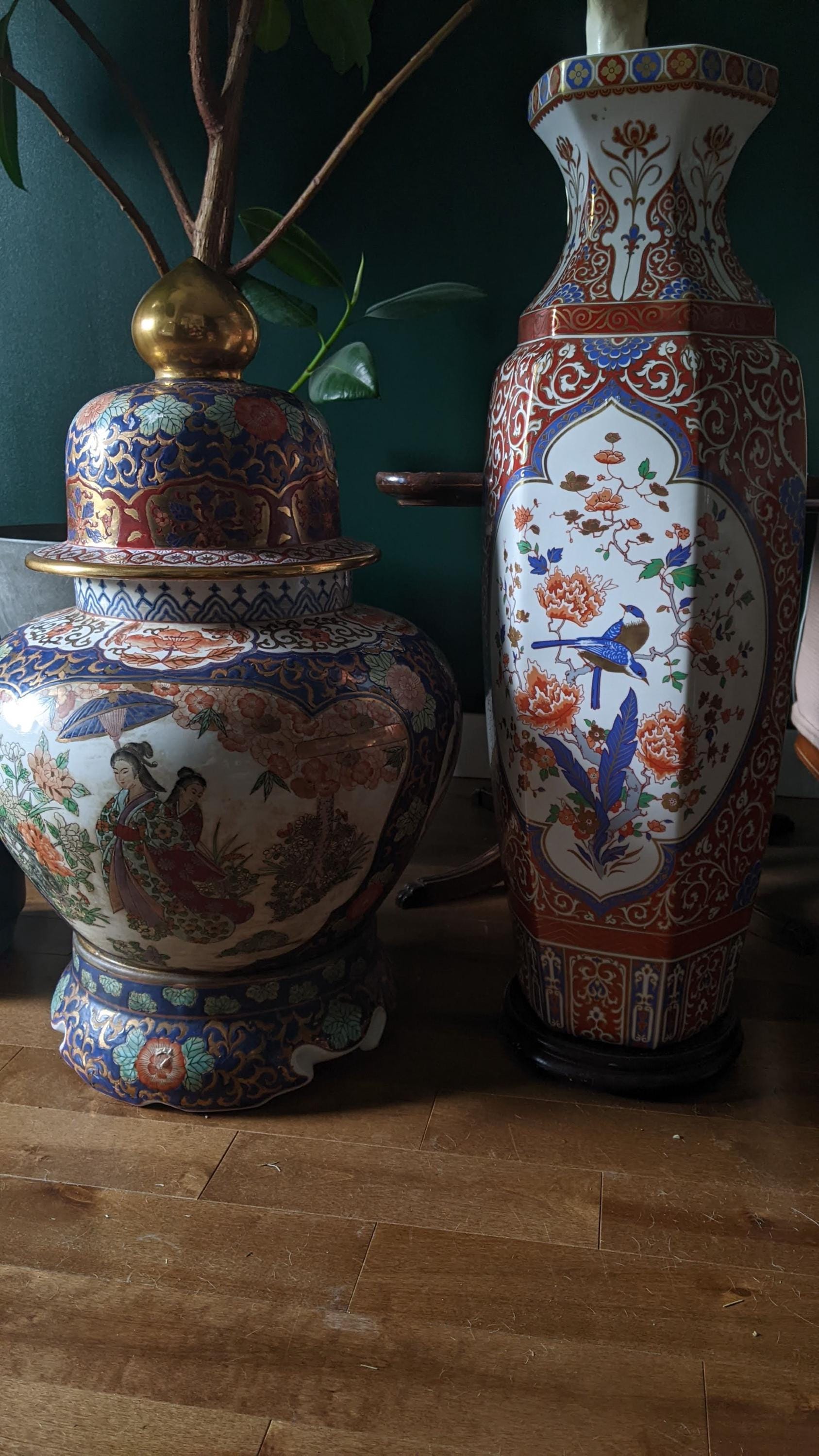
(Large chinoiserie vase)
3. Furniture with a Twist Choose one or two lacquered or faux-bamboo furniture pieces (e.g., a black chinoiserie chest, a pagoda-style étagère) and pair with modern minimalist items.A chinoiserie desk or cabinet works beautifully in an otherwise contemporary home office.
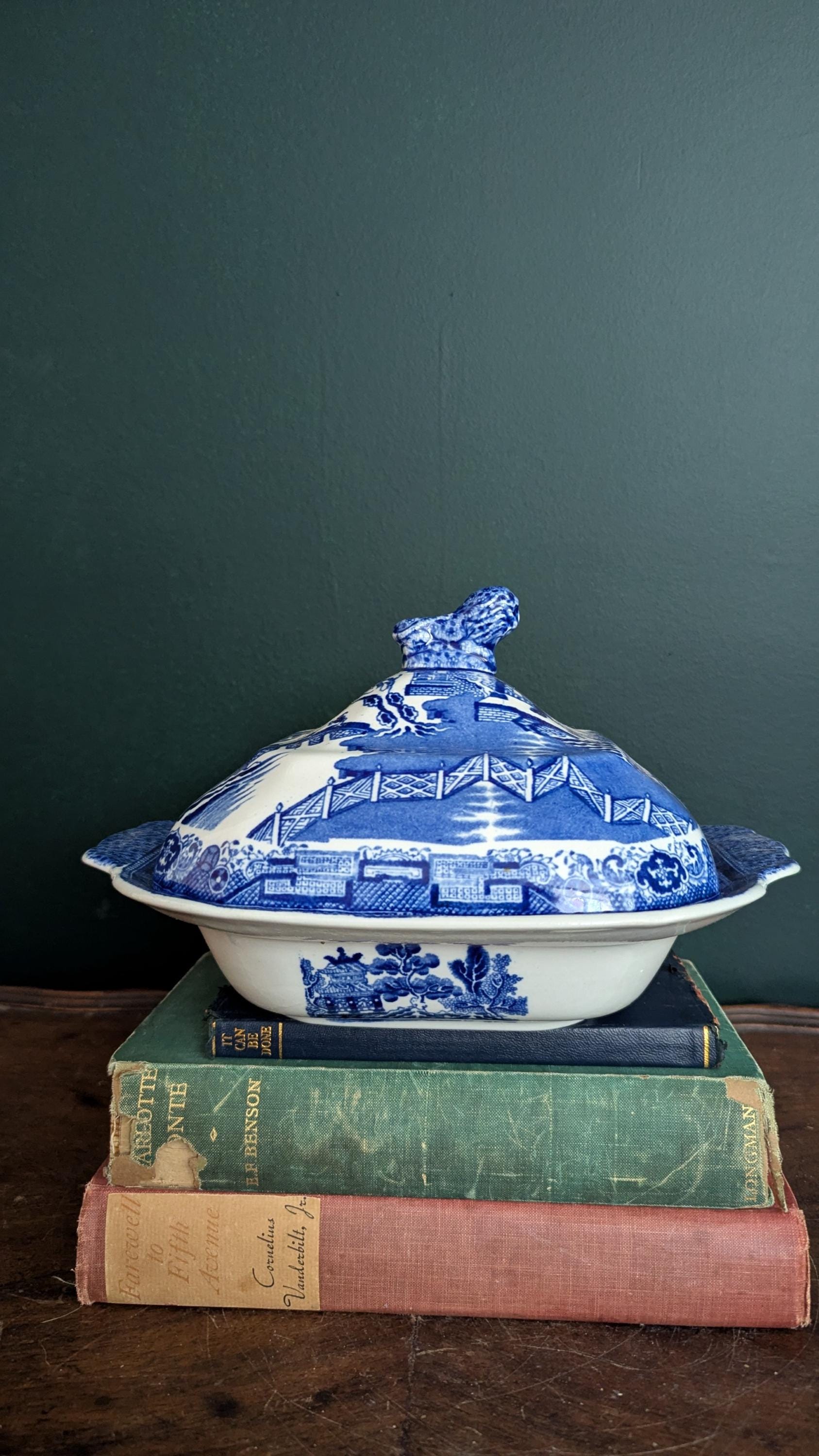
( Wedgewood blue willow serving dish) * AVAILABLE*
4. Fabric & Textiles Accent pillows or upholstery in toile or chinoiserie-style silk add instant flair.Look for motifs like cranes, cherry blossoms, or peonies.Keep the palette soft (blush, navy, jade, ivory) to maintain a calm vibe.
5. Lighting and Accessories Add a pagoda-style lantern or lamp for subtle charm.Lacquered trays, hand-painted mirrors, or folding screens can act as both décor and functional pieces.
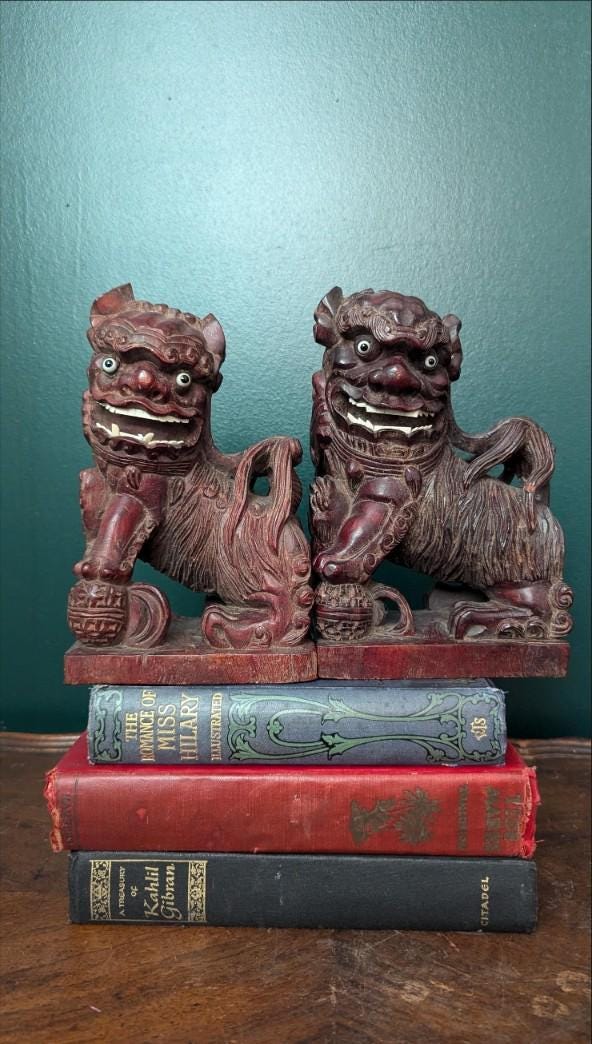
( Pair of rosewood antique Foo Dogs * AVAILABLE*)
6. Blend with Other Styles Modern chinoiserie pairs well with: Mid-century modern (think a lacquered console beneath a modern abstract art piece)Scandinavian minimalism (with one bold chinoiserie item as the focal point)Hollywood Regency (glam meets East)
7. Garden or Outdoor Touches Use Asian-inspired garden elements like a small pagoda sculpture, bamboo, or decorative screen outdoors.Chinoiserie works beautifully in garden rooms or sunrooms.
Check our “ Chinoiserie” section for a mix authentic Asian antiques and English chinoiserie
